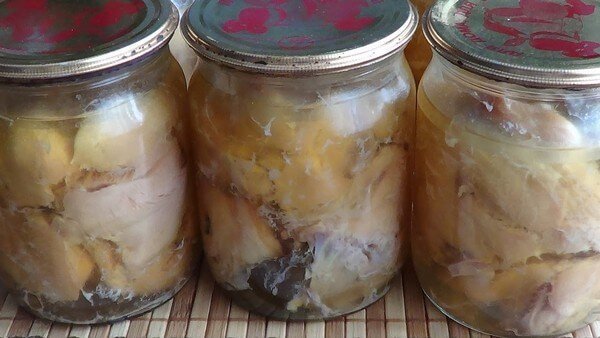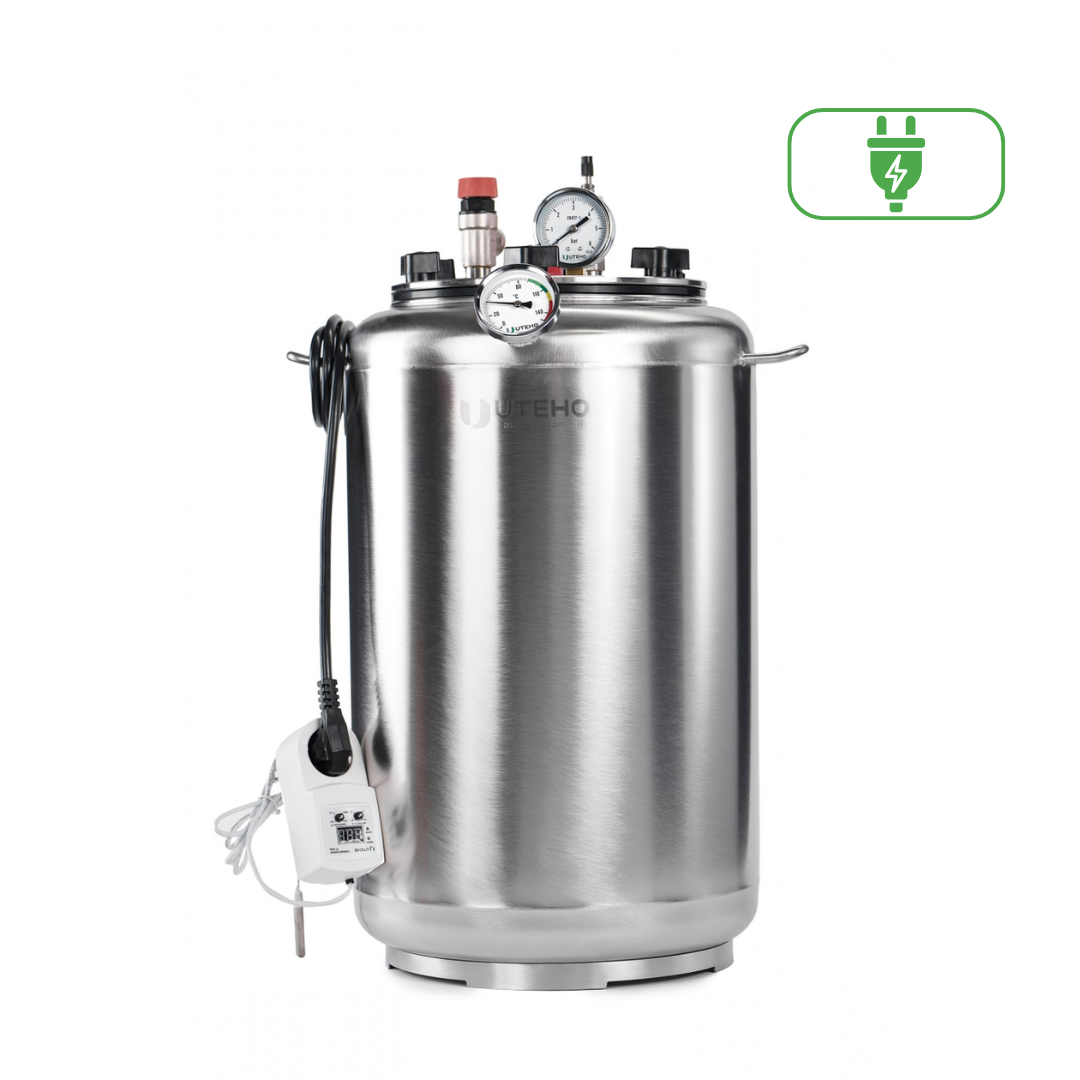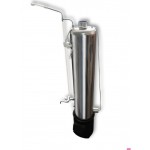
Stew in an autoclave: basic recipes
Homemade stew is an excellent alternative to store-bought canned food with a suspicious composition, because “factory” options usually contain a lot of tendons and cartilage, maximum fat and a minimum of meat. The most convenient preservation method is cooking stew in an autoclave at home — a compact device allows sterilization according to industrial requirements. This means that the meat will be cooked quickly, and all harmful microorganisms will be destroyed during heat treatment.
Cooking stew in an autoclave
Stew or stewed meat has the same meaning. The product is prepared using the preservation method.
The main feature of homemade meat preparations using an autoclave is the ability to put raw ingredients into jars — they will be cooked during autoclaving (processing at high temperature under pressure). At the same time, the meat will stew perfectly and soak in spices. This factor allows at least halving the time and effort spent on preservation.

Stew in an autoclave can be made from pork, beef, and poultry. If it is based on pork, duck, or chicken, there is no need to add extra fat into the jars: under high-temperature influence, the meat will release the necessary amount (naturally, the fat layer should not be removed). But for beef, extra fat needs to be added because the meat is lean. It is important to follow the proportion of spices — if, for example, you put more bay leaves, the stew will taste bitter.
In the autoclave, already sealed jars with meat and spices are placed. It is important to add water into the chamber so that it covers the lids by 2 cm. If you ignore this and pour less water, the meat in jars on different levels will cook differently: somewhere it will stew, and somewhere it will remain tough.
Temperature and cooking time for stew in an autoclave
Homemade stew in an autoclave will be cooked correctly and will be tasty, as well as safe for storage, if the following conditions are met:
- The loaded autoclave must be hermetically closed and pressure created up to 1 bar. According to the manometer, you must make sure that the pressure does not drop (this means the lid connection is airtight).
- Start heating the autoclave to the specified temperature. It is important to maintain it: if you cook stew at a lower temperature, not all harmful microorganisms will be destroyed; if at a higher one, it will turn into tasteless red jelly. During cooking, the pressure will reach about 3–4 bar (with full autoclave loading). This is a good indicator and should not be adjusted.
- As soon as the required recipe temperature is set, the sterilization process begins. You must maintain a stable temperature level for a certain period of time. The degree of readiness and taste depend on compliance with this requirement.
The final stage is pressure relief and natural cooling of the autoclave, after which the lid can be opened and the jars removed.
For convenience, we have prepared a table with temperature and cooking time standards for different types of stew:
If the thermometer is located at the top of the container
| Type of stew | Jar volume, L | Sterilization temperature, °C | Sterilization duration, min |
|---|---|---|---|
| Pork, beef and lamb preserves | 0.35 | 110 | 30 |
| 0.5 | 110 | 40 | |
| 1.00 | 110 | 40 | |
| Poultry preserves | 0.35 | 110 | 20 |
| 0.5 | 110 | 30 | |
| 1.00 | 110 | 40 |
If the thermometer is located at the bottom of the container
| Type of stew | Jar volume, L | Sterilization temperature, °C | Sterilization duration, min |
|---|---|---|---|
| Pork, beef and lamb preserves | 0.35 | 120 | 30 |
| 0.5 | 120 | 40 | |
| 1.00 | 120 | 40 | |
| Poultry preserves | 0.35 | 120 | 20 |
| 0.5 | 120 | 30 | |
| 1.00 | 120 | 40 |
120 degrees Celsius is the temperature at which meat preserves are cooked in industrial autoclaves. This is the optimal heat treatment indicator for destroying all microorganisms. The sterilization process in the autoclave begins after the water has warmed to 120 degrees. Autoclaving time should not exceed 70 minutes, and the temperature should be 120 degrees.
BESTSELLERS
Recipe for Pork Stew in an Autoclave

Delicious classic pork stew for winter in an autoclave is prepared from the following set of ingredients (calculated for 1 half-liter jar):
- pork - 450 g;
- chopped onion - 7 g;
- salt - 1 tsp;
- pepper - 3 peas;
- bay leaf - 1 pc.
If the meat has little fat, add 50 g of lard to the recipe. Cut the pork into approximately 50-gram pieces. Put finely chopped onion, bay leaf, and pepper into a clean jar. Mix the salt with 1 tsp of water and also add to the jar. Loosely place the meat pieces into the container, leaving 1–2 cm to the lid. Seal the jar tightly. Then place the containers in the autoclave and start sterilization.
Recipe for Beef Stew in an Autoclave
Beef makes a high-quality stew in an autoclave - for its preparation you need:
- beef with fat layer - 2 kg;
- if the beef is lean - 0.5 kg fat and 1.5 kg meat;
- carrots - 2 pcs.;
- onions - 2 pcs.;
- pepper and salt;
- bay leaf.
Wash the beef and cut into 4 cm cubes. Peel the onion and carrot and cut coarsely (can be in rings). These ingredients can be omitted in the stew - it depends on your preference. Place 3 bay leaves, 3 allspice, and 3 black pepper peas into clean jars. Place the meat pieces on top, without tamping. Sprinkle the meat with salt to taste. The jars can be sealed. That’s all - now you can start the sterilization process. Store the finished preserves in a dark and preferably cool place.
Recipe for Lamb Stew in an Autoclave

Excellent lamb stew in an autoclave is prepared on the basis of the following ingredients:
- lamb (preferably neck and shoulder) - 1.5 kg;
- garlic - 2 heads;
- sunflower oil - 200 ml;
- bay leaf - 2 pcs.;
- sea iodized salt - 2 tbsp.;
- red and black ground pepper.
Cooking process: first wash the meat and cut into 3 cm pieces. Put the pieces in a pan, sprinkle them with salt and pepper, as well as crushed bay leaf, add sunflower oil, mix and leave in the refrigerator for a day.
Peel the garlic heads and each clove. One hour before the end of the day, add the chopped garlic cloves to the meat, mix. Then remove the lamb, loosely place it in jars, leaving 2 cm to the lids. Be sure to put the marinade ingredients along with the meat. Seal the jars with metal lids and start the sterilization procedure.
Recipe for Duck and Chicken Stew in an Autoclave
It is easy to cook poultry meat in an autoclave. The best choice for this is fatty chicken or duck. Required ingredients:
- poultry meat - 1 kg;
- bay leaf - 2 pcs.;
- salt - 2 tbsp.;
- a set of dry spices (optional).
For stew, fatty domestic poultry is the best: remove feathers and fluff from the carcasses, clean them from entrails, rinse. Cut off the fat and set aside separately. Cut the carcasses into medium-sized pieces, and also finely chop the fat. Rub the meat with salt and crushed bay leaf, add pepper or a spice mix for poultry. After that, place the meat mixed with fat into clean half-liter jars and close. The blanks can be sterilized.

Rabbit Meat Preserves in an Autoclave
For this delicious stew you will need:
- rabbit carcasses - 4–5 pcs.;
- bay leaf - 2 pcs. per jar;
- pepper - 4 peas per jar;
- cloves - 3 pcs. per jar;
- salt - 1 tsp. per jar.
Process the carcasses, carefully removing the meat with a knife. Cut the meat into medium pieces. Separate the fat and place it in a separate container. If the rabbits are lean, add pork lard to the recipe (about a 50 g piece per jar). Put bay leaf (preferably steamed beforehand), pepper, chopped rabbit fat or lard into clean jars. Then tightly place the meat, add pepper and cloves on top. Sprinkle salt over the top and finally make a 2 cm layer of rabbit fat or pork lard again.
Do not forget to leave empty space before the lids. Seal the jars tightly with metal lids and place in the autoclave. Sterilization can begin. After cooling, store the stew in a cool dark place. If everything is done according to the recipe, the meat will be stored for a long time without loss of quality.
Cooking meat preserves in an autoclave is very simple - the presence of the device eliminates the need to stew meat before placing it in jars. And also, very importantly - there are no restrictions on the type of meat. Stew can be made from domestic livestock and poultry, as well as game. Meat can be cooked in its pure form, or vegetables or cereals can be added to the preserves.
The shelf life of meat preserves is about 4 years. This depends on the conditions in which the product is kept. But attention is also paid to the material of the can and the presence of ingredients in the preserve. It is better not to store stew for more than 2–3 years. Stew is recommended to be stored at a temperature not higher than 20 degrees with low humidity. This can be not only a refrigerator but also a cellar or simply a dark cool room.
All these opportunities are available to you with a quality autoclave. Our company offers reliable, safe, and convenient models manufactured industrially. They comply with all standards and are prepared for long-term operation. You will love the preservation process when you realize that an autoclave is a mini-canning factory that allows you to get large volumes of preserves in a minimal amount of time.
Read also:
- Stew with Buckwheat in an Autoclave
- Chicken and Duck Preserves
- Pork Preserves
- Pâté in an Autoclave
- Pearl Barley with Meat in an Autoclave
- Porridge with Meat in an Autoclave







.png)





